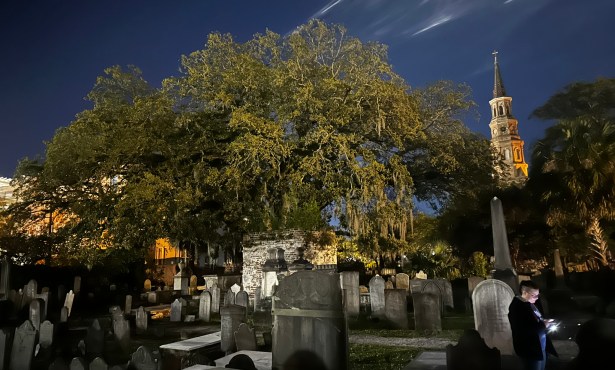A Good District
Thriving Schools and Students in Goleta
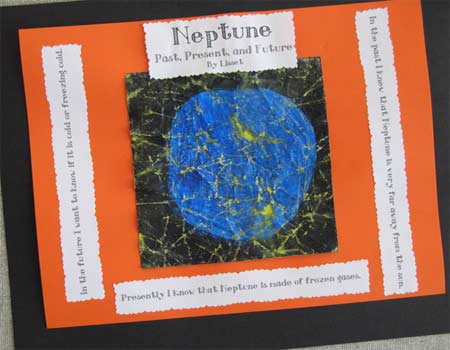
(Above photo: Learn about verb tenses in space in the Goleta School District.)
You don’t see many headlines about the Goleta elementary schools. But in this case no news truly is good news. Enrollment is holding steady at around 3500 students, and as a basic aid district, the bulk of the district’s funding is secure. Its share of the local property tax exceeds the state per pupil level of funding, and the District gets to keep the balance. However, there is a slight possibility that a recession-induced, lowered reassessment of properties might lead to reduced revenues to the Goleta District.
In addition, Superintendent Dr. Kathleen Boomer, said that the district may lose around $800,000 in state funds for categorical programs such as special education, gifted and talented education and programs for low-income kids. However, compared to districts such as Santa Barbara, Goleta remains relatively immune to the state’s budget woes.
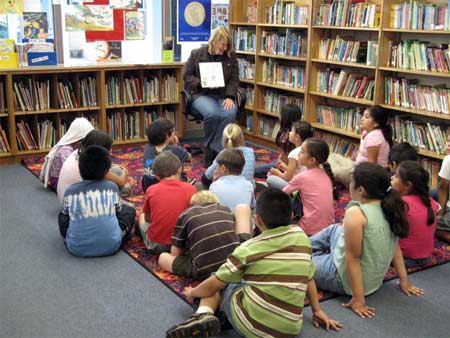
The District’s strategic plan aims to build a community of lifelong learners, meet the needs of all students through differentiated instruction (see below), promote student academic growth and create global citizens. This, says Boomer, is the driving force of the instructional program. To ensure that it happens, teachers have two hours of release time by grade level each month to plan together to work toward these goals.
I had the pleasure of visiting two schools – Hollister and Isla Vista – and the principals both stressed how important these meetings were for creating a professional learning community where teachers had time to share their insights and experiences with one another.
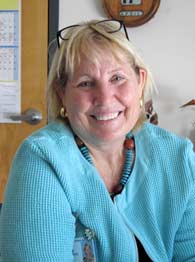
This year all teachers have been trained in differentiated instruction, which aims to help children learn “by meeting each student where he or she is, and helping the student to progress”. It recognizes that children learn in different ways. In one third-grade classroom I watched a lesson about pints, quarts and gallons. Some children were constructing clowns using four equal squares of paper for the body, representing pints; some were figuring out how many pints of water there were in a 10-gallon fish tank and others were doing written problems on work sheets. All were learning basic principles about these measurements.
Every school has a library and is served by music and physical education specialists. The two that I visited had art and computer technology instruction as well. In both these schools, the classrooms were a riot of color with children’s art.
Just this year, Hollister School has been named a California Distinguished School. Principal Ryan Sparre says that while improvement in test scores was an important part of this recognition, it was also based on a team visit evaluation that looks at all aspects of the school’s program. Thanks to an active Parent-Teacher Association, they have an art specialist on staff and when I visited they were about to have an art show displaying work by every student in the school. This and other programs bring parents and children together on campus once each month.
An important program in all schools is service learning, designed to put children in touch with their community and the world. This integrates a volunteer project with research to understand the background of the activity and what the students’ efforts accomplish. At Hollister School, one third-grade class raised money to provide food for some animals at the zoo and learned the natural history of the animals and what their diet should be. Another class worked on creek restoration and a sixth-grade class knitted scarves, which they sold during the holidays to provide help to needy families. Students at Hollister School are 55 percent Hispanic. Around 30 percent of Hollister School students come from homes where the first language is other than English.
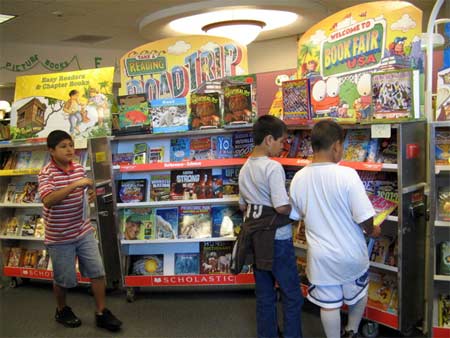
The student body at Isla Vista School is 83 percent minorities, including 73 percent Latino. There are 17 languages represented, with 43 percent of students still learning English. Students come from homes ranging from UCSB professors and graduate students to recent immigrants from Mexico and South America. According to Principal Lisa Maglione, a few years ago Isla Vista was a Program Improvement School under the federal “No Child Left Behind” act, which meant that parents could ask that their child go to another school. In fact only a few asked for a transfer and the school has now improved its test scores so that it has moved out of this classification. Maglione attributes this to teachers carefully crafting lessons to meet children where they are while maintaining high standards. Maglione describes the school as a holistic educational environment for the whole child while maintaining rigorous academic goals.
Isla Vista School is a true community school, open for children starting with breakfast at 6:45 a.m., going through the school day and after school programs until 6 pm at night. Then from 6:30 p.m. to 9 p.m. there are English as a Second Language and parenting classes. Because of its proximity to UCSB, it can draw on the resources and talents of over 200 student volunteers.
I felt an atmosphere of trust and confidence among the principals and teachers and the school board and district administration. All were involved in development of the District’s strategic plan and are vested in it as a guide to the educational program.



